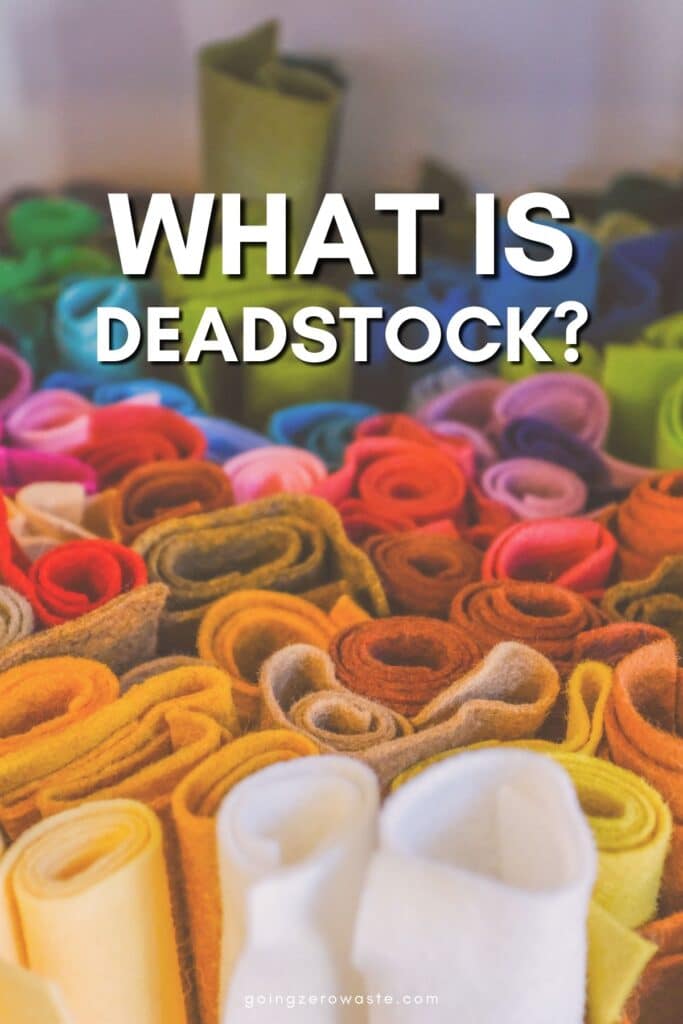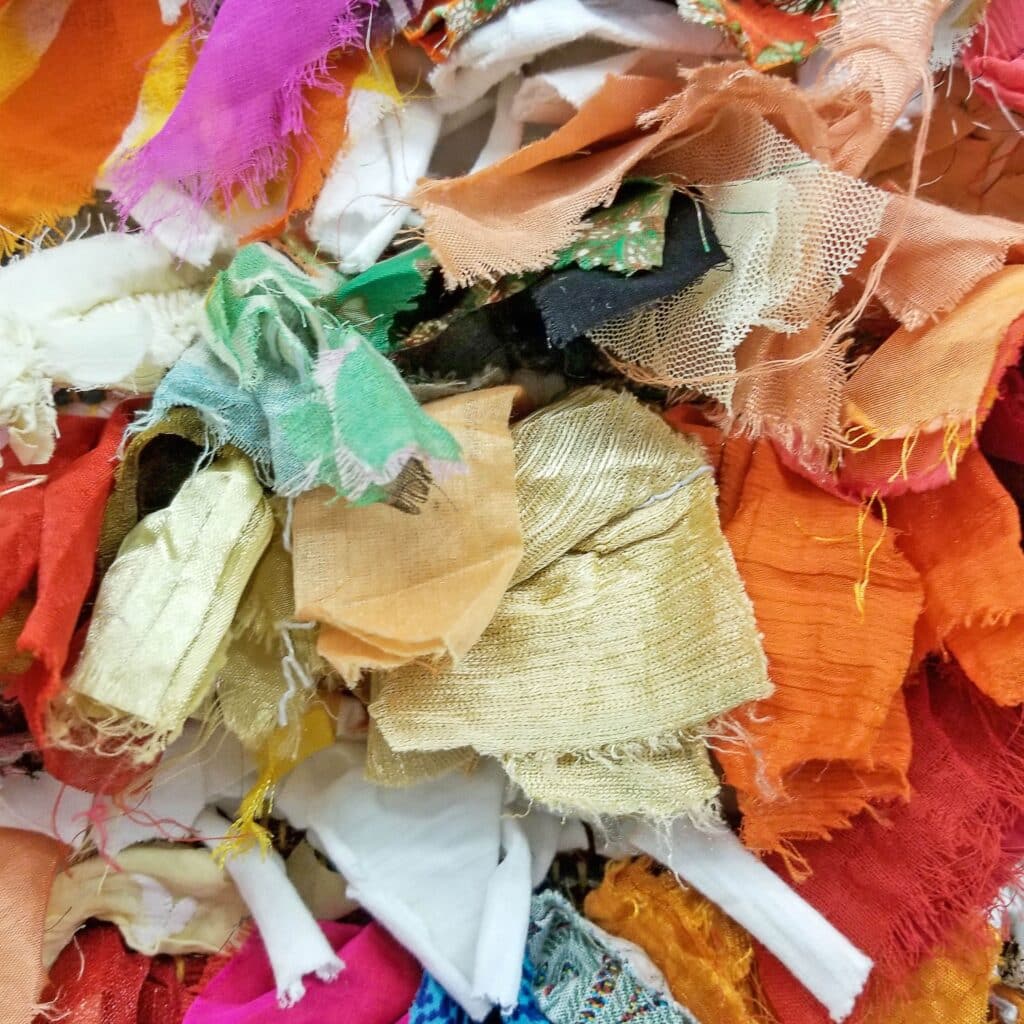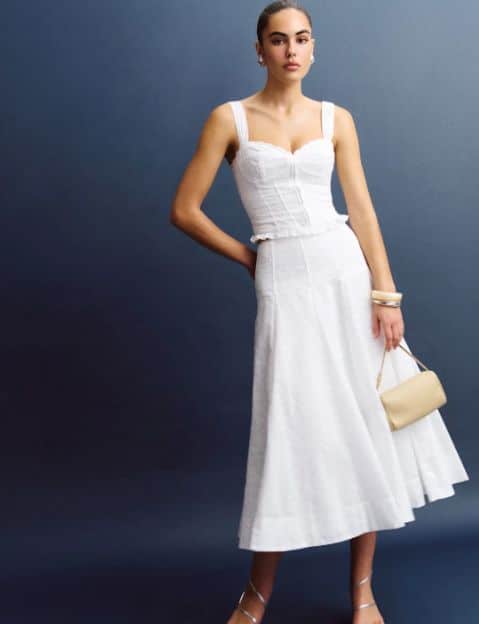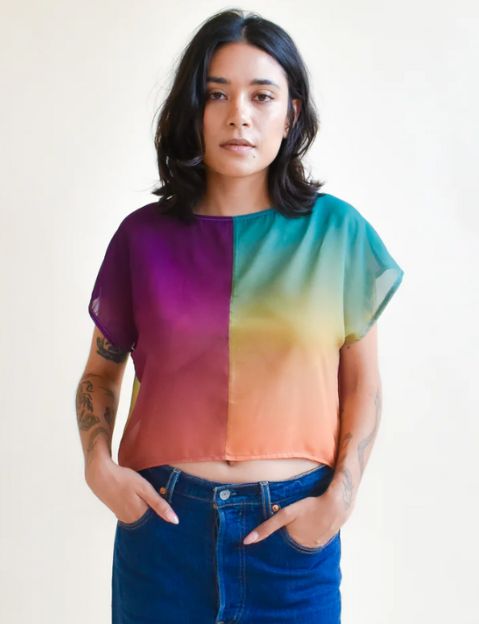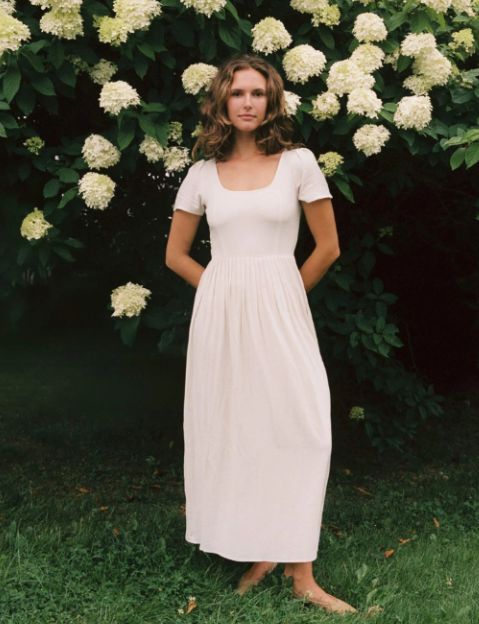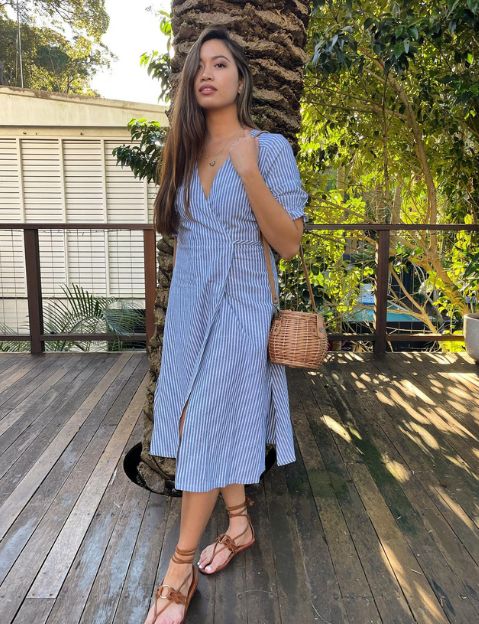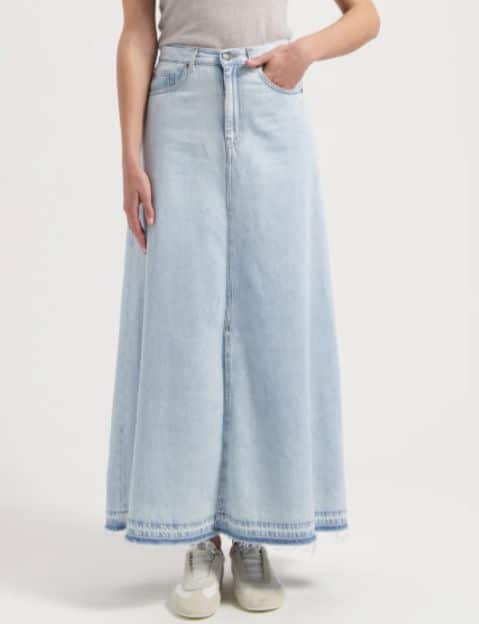[ad_1]
Last Updated on May 14, 2025
You may have seen deadstock fabric on a clothing tag before. But what exactly does it mean? And is it sustainable? In comparison to using virgin materials, it is.
Most of the clothes we wear today are made using virgin materials (in fact textile production relies on 99.7% virgin materials). Virgin materials are raw materials that have never been used before, either for manufacturing or any other purpose.
Some of the links in this post are affiliate links; for more information please see my disclosure policy.
This is a problem, considering the environmental impact due to resource extraction, energy consumption, and pollution. Virgin polyester production alone emits 119.59 kg of CO₂ per 100 kg of fabric.
Opting for recycled materials in our clothing is one solution to this problem. Deadstock material is made from recycled fabrics. Here’s what you need to know about deadstock material and which brands use it.
what does deadstock mean?
Deadstock refers to leftover or unused fabric that was originally manufactured for a purpose but never sold or used in production.
This could be due to overproduction, canceled orders, or slight imperfections that prevent it from meeting a brand’s standard.
Instead of being discarded, deadstock fabric is repurposed, giving it a second chance in fashion, upholstery, and other creative industries.
Some examples of deadstock materials include:
- Surplus fabric: Excess fabric from textile mills or factories that cannot be used for other orders or collections.
- Cancelled orders: Fabric produced for a specific order that was later canceled by the brand.
- Fabric samples: Unused fabric samples from designers or brands.
- End-of-roll remnants: Small pieces of fabric left over from larger rolls.
- Slightly imperfect materials: Fabrics that don’t meet stringent quality standards but are still usable.
- Designer excess: Unused fabric from designers or brands that were not incorporated into their collections
Here are some types of clothing that utilize deadstock materials:
- Bathing suits – Some brands repurpose deadstock fabrics to create unique swimwear.
- Dresses – Many sustainable fashion labels craft limited-edition dresses from surplus textiles.
- Jackets & outerwear – Deadstock materials are often used for one-of-a-kind outwear.
- Loungewear and activewear – Leggings and sweatpants can be made from repurposed fabrics.
- Accessories – Scarves, tote bags, and hats frequently incorporate deadstock textiles.
is deadstock fabric good?
Deadstock fabric is good in terms of sustainability because it reduces textile waste. It makes sure fabric scraps that would’ve ended up in landfill get a second chance at life.
It also reduces the demand for new textile production, which saves resources. This helps promote a more circular economy and innovation through creative solutions.
However, it’s worth noting that just because a brand utilizes deadstock materials, doesn’t make them completely sustainable. You should always investigate a company’s ethics and practices in-depth to see what other steps they’re taking to help people and planet.
Also, deadstock fabrics can be natural or synthetic – so keep that in mind when shopping. Natural fabrics generally have a lower environmental impact compared to synthetic fabrics. But utilizing deadstock fabrics (be they synthetic or natural) automatically cuts down on emissions simply for being recycled content.
what is a deadstock piece?
A deadstock piece refers to any item created using deadstock fabric. Many brands craft limited-edition clothing, accessories, and furniture using these materials, offering consumers something unique while contributing to waste reduction.
Since deadstock fabric availability varies, pieces made from it tend to be one-of-a-kind or produced in small batches.
is deadstock fabric expensive?
Since deadstock textiles are essentially excess, unused fabrics, they often aren’t as expensive as virgin materials. However, some deadstock materials may utilize high-end, rare designer fabrics, which may elevate the cost of the finished piece.
Deadstock pieces are usually made in small-batch production, considering the designer can only work with the scraps they acquire. This makes them more exclusive, which can also bump-up the final price tag.
sustainable brands that use deadstock
Here are some eco-friendly clothing brands that use deadstock material in some of their garments. All of these brands try to reduce their environmental footprint through using organic materials, low waste packaging, and/or achieving eco certifications.
Keep in mind deadstock pieces tend to be small-batch and may be harder to find, even on these websites. Searching ‘deadstock’ on the brand’s website can help you narrow your search.
I’ve gone ahead and highlighted some of my favorite features of each brand, but it isn’t an exhaustive list. Be sure to check out their websites for more information.
1. reformation
- Women’s clothing
- Uses deadstock fabrics, recycled materials, and eco-friendly production methods to minimize waste
- Deadstock items: Dresses, tops, skirts, and two-piece sets made from surplus textiles
- 100% recycled paper mailers and compostable bags for shipping
2. altar
- Handmade, ethically produced apparel with a focus on unique designs
- Uses deadstock fabrics and natural dyes to create sweatshop-free clothing
- Deadstock items: Dresses, jumpsuits, and casual wear crafted from repurposed textiles
3. christy dawn
- Women’s clothing
- They support regenerative cotton farming, restoring soil health and promoting ethical sourcing
- Deadstock items: Limited-edition dresses, blouses and accessories
- Every Christy Dawn piece is made by local artisans in downtown Los Angeles
4. all the wild roses
- Women’s clothing based in Australia
- Up to 90% of their designs are made from recycled fabrics, including deadstock
- Deadstock items: Blouses + dresses
- Compostable packaging
- Small-batch production, made-to-order
- Certified B-corp
5. mud jeans
- Women and men’s denim
- Uses deadstock denim + recycled cotton to make jeans and jackets
- Deadstock items: Jeans, denim jackets, + accessories
- Offers a denim leasing program, where customers can return old jeans for recycling
- Certified B-Corp + Certified by Cradle to Cradle
So, would you give deadstock material a shot? Let me know your thoughts in the comments!
[ad_2]

